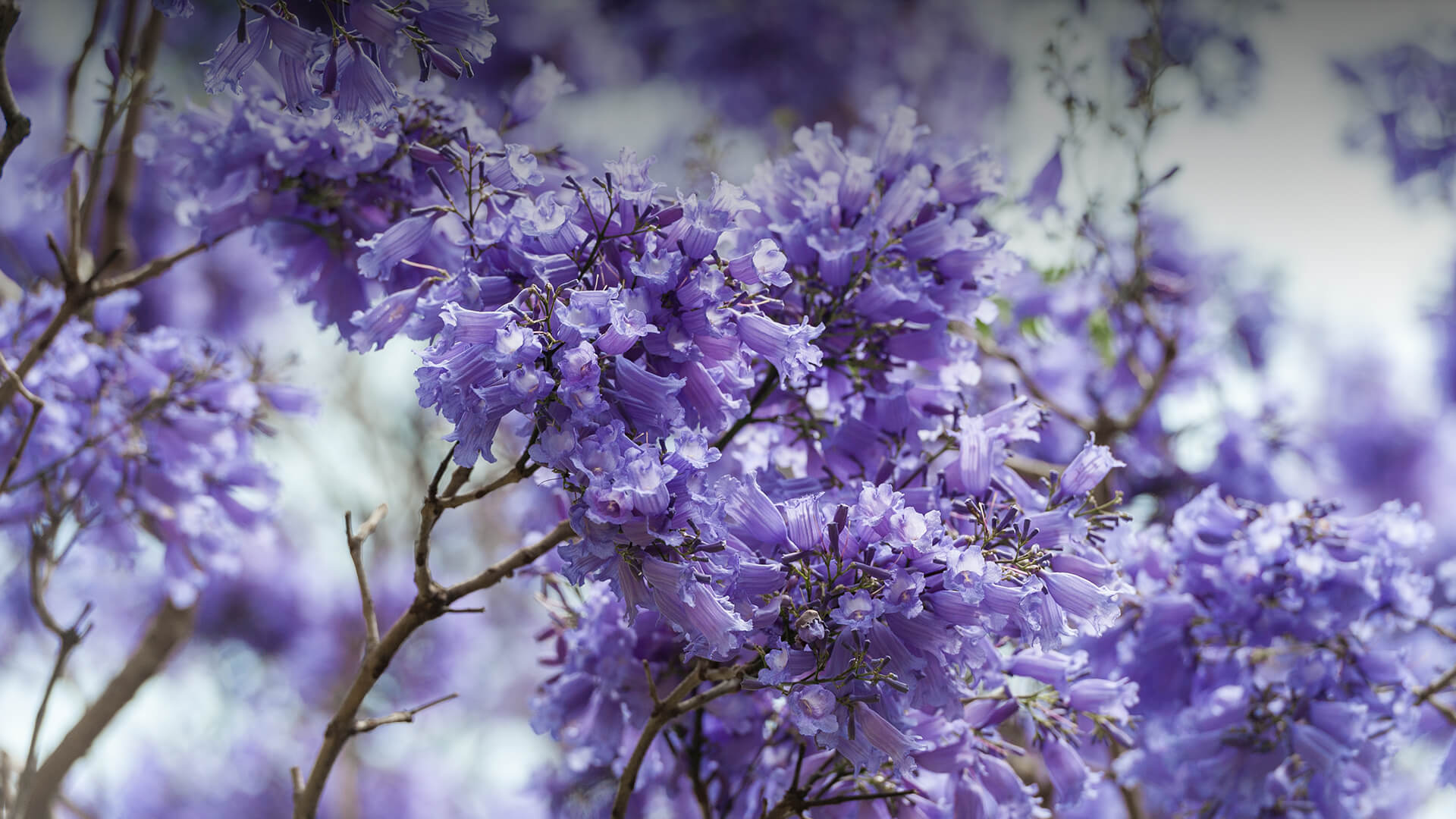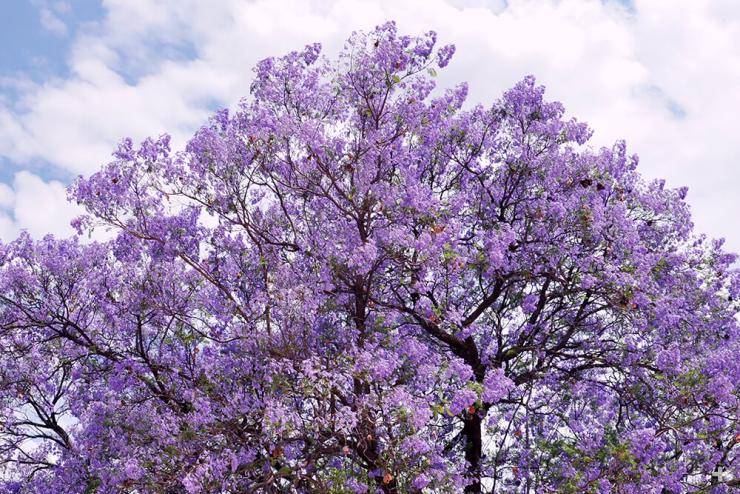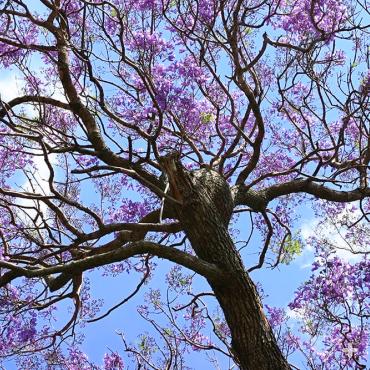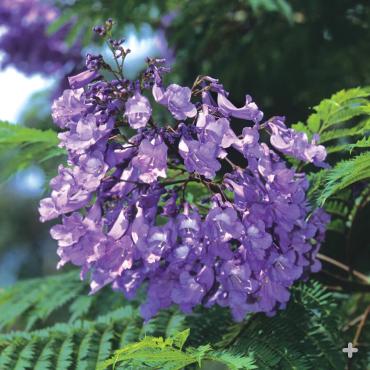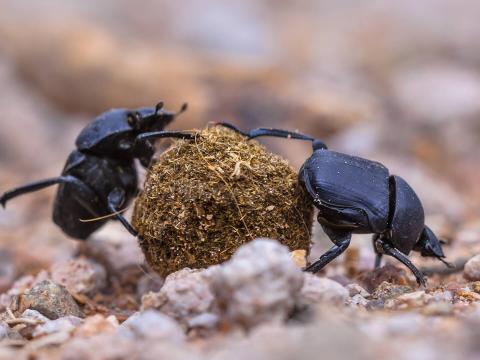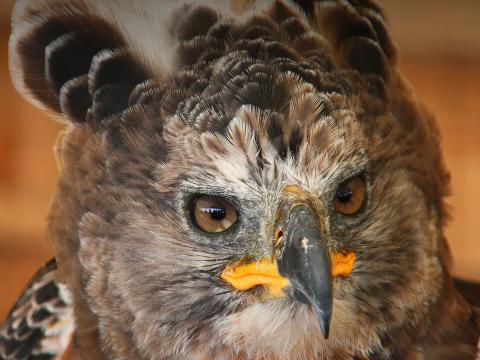Jacaranda
- DIVISION: Tracheophyta (vascular plants)
- CLASS: Magnoliopsida (dicotyledons)
- ORDER: Scrophulariales
- FAMILY: Bignoniaceae
- GENUS: Jacaranda
- SPECIES: mimosifolia
OVERVIEW
Native to dry, subtropical mountain valleys of Argentina and Bolivia, jacarandas have been planted all over the world in places with similar climates. Popular shade and street trees in Southern California, they are a welcome marker of springtime. In late spring and summer, jacarandas treat residents to breathtaking blooms—lavender-blue flowers that cover the tree's spreading crown, and then carpet the ground beneath the tree with color.
CHARACTERISTICS
Even in some places too cold for jacarandas to flower, these trees are grown for their delicate-looking, fernlike leaves. Small leaflets are arranged in rows, one on each side a leaf's midrib, and each of those leaflets is further divided in the same fashion. In spring, the leaves drop, and inch-long (2.54 centimeter) tubular flowers burst forth in foot-long (30.5 centimeter) clusters at the tips of every branch. Flowers last about eight weeks before falling to the ground. As the flowers fade, green leaves resprout. As the leaves do their job—turning sunlight into energy—they nourish the next generation of jacarandas: seeds. Jacaranda seeds develop in tough, flattened, oval pods that are about two inches (five centimeters) long. When the pod dries and turns brown, it splits open, rather like a little mouth. The papery, winged seeds inside flutter and spin as they are whisked away by the breeze.
CULTIVATION
Jacarandas are planted as ornamental trees in many subtropical and warm-temperate regions of the world. They are drought- and heat-tolerant, hardy to about 20 degrees Fahrenheit (-6.7 degrees Celsius). Planted in well-drained soil and full sun, a jacaranda will reward you with dappled shade and a show in springtime. Surface roots can be large, so jacarandas usually aren't a good choice for planting close to structures or walkways.
CONSERVATION
Agriculture has taken over much of the jacaranda's native habitat, leading the IUCN to categorize this species as Vulnerable. On the other hand, the tree has naturalized in places far from its home. It is regarded as an invasive species in some areas because it out-competes the native plants. In South Africa, for example, trade in this species is prohibited, and planting a jacaranda requires special permission.
OUR COLLECTION
Jacarandas line the edge of the Safari Park's parking lot. At the Zoo, you can see jacarandas on Fern Canyon Trail and near the reptile habitats in Discovery Outpost.

